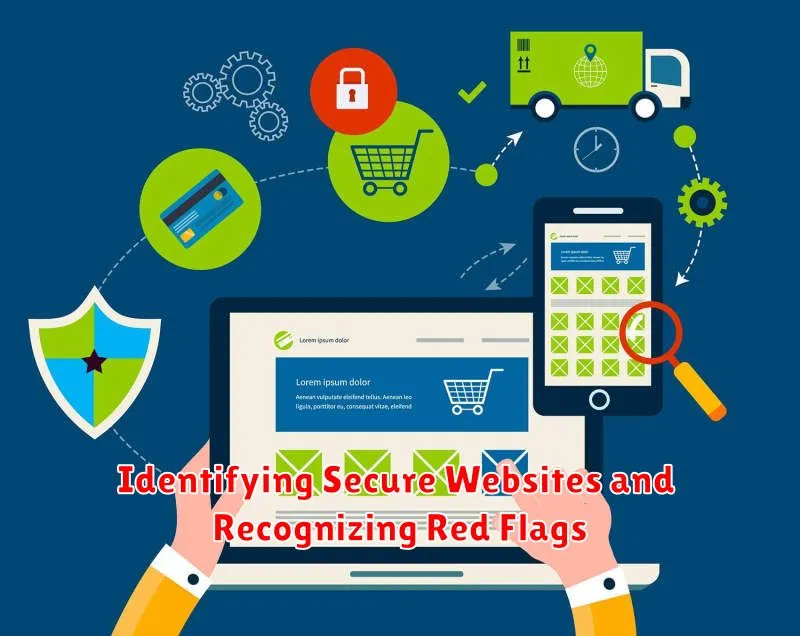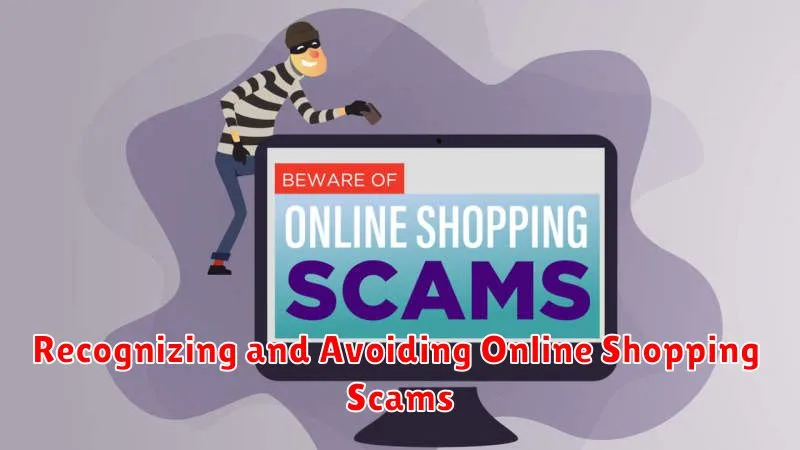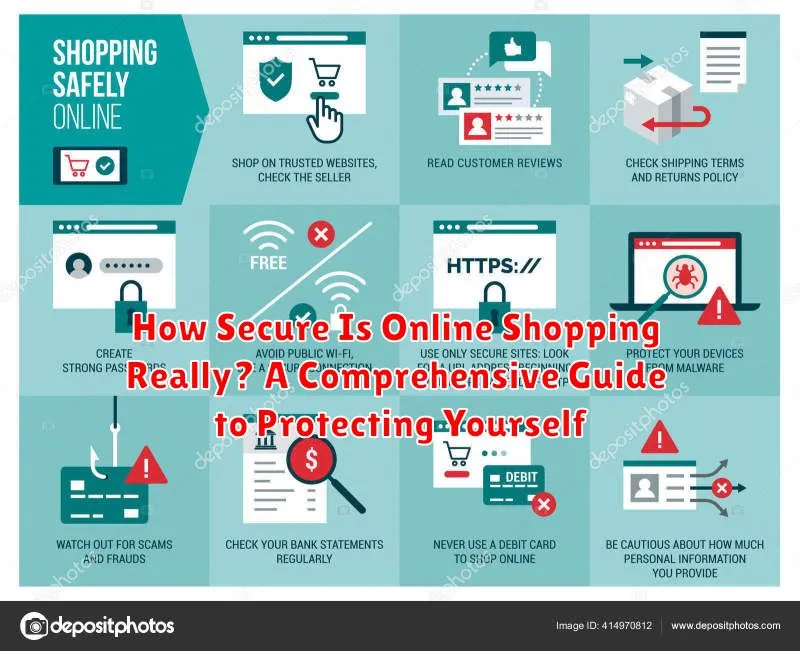In today’s digital age, online shopping has become an integral part of our lives. The convenience of purchasing goods and services from the comfort of our homes is undeniable. However, with this increased reliance on online transactions comes a growing concern: how secure is online shopping really? This comprehensive guide will delve into the potential security risks associated with online shopping and provide practical advice on protecting yourself from fraud and other cyber threats. Understanding the landscape of online security is crucial for navigating the digital marketplace safely and confidently.
From data breaches and phishing scams to identity theft and credit card fraud, the threats to online shoppers are real. This article will address these security concerns head-on, offering actionable steps to enhance your online security practices. We’ll explore methods for protecting your personal information, recognizing and avoiding online scams, and ensuring a secure online shopping experience. By implementing the strategies outlined in this guide, you can confidently enjoy the benefits of online shopping while mitigating the potential risks.
Understanding the Risks of Online Shopping
While online shopping offers incredible convenience, it’s crucial to be aware of the potential risks involved. Understanding these risks empowers you to take proactive steps to protect yourself and your financial information.
One significant risk is data breaches. Criminals may target online retailers to steal customer data, including credit card numbers, addresses, and even social security numbers. The consequences of such breaches can be severe, leading to identity theft and financial loss.
Phishing scams are another common threat. These deceptive tactics involve fraudulent emails or websites that mimic legitimate businesses. Unsuspecting shoppers may enter their login credentials or financial information on these fake platforms, unwittingly handing it over to criminals.
Malware can also pose a risk. Malicious software can infect your computer or mobile device through compromised websites or downloads, potentially stealing your data or tracking your online activity.
Secure Payment Gateways and Encryption
Secure payment gateways act as intermediaries between you, the merchant, and the payment processor. They encrypt sensitive data, like your credit card number, ensuring it’s transmitted securely across the internet. Look for gateways that use SSL/TLS encryption, indicated by a padlock icon and “https” in the website address.
Encryption is the process of scrambling data to make it unreadable to unauthorized parties. Robust encryption protocols, like 256-bit encryption, are crucial for protecting your financial information during online transactions. This strong encryption ensures that even if intercepted, the data remains incomprehensible to hackers.
Trusted payment gateways often utilize tokenization. Tokenization replaces your sensitive card details with a unique, randomly generated token. This token is used for the transaction instead of your actual card number, adding an extra layer of security. Even if a breach occurs, the token is useless to thieves, protecting your primary account information.
Identifying Secure Websites and Recognizing Red Flags

Before entering any sensitive information, scrutinize the website for signs of security. A secure website will use HTTPS, indicated by a padlock icon in the address bar. The URL should begin with “https://” – the “s” stands for secure. Clicking on the padlock will usually display the website’s security certificate, verifying its authenticity.
Be wary of websites with misspellings in the URL or unusual domain extensions. These could be signs of phishing attempts. Look for contact information, such as a physical address, phone number, and email address, to verify the legitimacy of the business. A legitimate business will typically have a clear privacy policy outlining how they collect and use your data.
Red flags to watch for include requests for excessive personal information, unclear return policies, and high-pressure sales tactics. If a deal seems too good to be true, it probably is. Trust your instincts – if anything feels off, it’s best to err on the side of caution and shop elsewhere.
Protecting Your Personal Information: Passwords, Privacy Settings, and More
Protecting your personal information is paramount when shopping online. Strong passwords are your first line of defense. Use a unique, complex password for each online account, incorporating a mix of uppercase and lowercase letters, numbers, and symbols. Consider using a password manager to securely store and manage your various passwords.
Privacy settings on your devices and within your web browser also play a crucial role. Regularly review and adjust these settings to control the information shared with websites and online advertisers. Be mindful of granting permissions to apps and websites, only providing access to information strictly necessary for their function.
Two-factor authentication (2FA) adds an extra layer of security whenever possible. This requires a second verification method, such as a code sent to your phone, in addition to your password, making it significantly more difficult for unauthorized access to your accounts. Enable 2FA on all accounts that offer it, especially for email and financial accounts.
Finally, be cautious about the information you share online. Avoid posting sensitive information, such as your full address or financial details, on public platforms. Regularly check your credit reports for any suspicious activity.
Safe Shopping Practices on Public Wi-Fi and Mobile Devices
Shopping online via public Wi-Fi or mobile devices presents unique security challenges. Avoid using public Wi-Fi networks for online purchases whenever possible. These networks often lack robust security measures, making your data vulnerable to interception. If you must use public Wi-Fi, consider a Virtual Private Network (VPN). A VPN encrypts your internet traffic, shielding your information from prying eyes.
When using your mobile device, ensure you are running the latest operating system and security software. Download shopping apps only from official app stores. Be wary of apps requesting excessive permissions, particularly access to contacts or location. Prioritize apps from reputable retailers. Just like on your computer, use strong and unique passwords for your shopping accounts on your mobile device.
Enable two-factor authentication whenever available. This adds an extra layer of security by requiring a second verification step, like a code sent to your phone, before allowing access to your account.
Dealing with Suspicious Emails and Phishing Attempts
Phishing attempts are a common tactic used by scammers to steal personal information. These attempts often come in the form of emails disguised as legitimate communications from online retailers.
Never click on links within suspicious emails. Instead, manually type the retailer’s web address into your browser. Look for telltale signs of a phishing email, such as poor grammar, misspellings, generic greetings (e.g., “Dear Customer”), and requests for personal information like passwords or credit card numbers. Legitimate businesses rarely ask for this information via email.
If you receive a suspicious email purporting to be from a retailer you frequent, contact the retailer directly through their official customer service channels to verify the email’s authenticity. Report any suspected phishing emails to the appropriate authorities, such as the Anti-Phishing Working Group (APWG) or the Federal Trade Commission (FTC).
Be wary of emails offering deals that seem too good to be true. These are often bait used to lure you into clicking malicious links or providing personal information. Always exercise caution and prioritize your online security when dealing with unsolicited emails.
Recognizing and Avoiding Online Shopping Scams

Spotting fake online stores is crucial. Look for unprofessional website design, poor grammar, and blurry images. Check for secure connections (HTTPS) and verify contact information. If a deal seems too good to be true, it probably is.
Be wary of high-pressure sales tactics like limited-time offers and countdown timers. These tactics can pressure you into making hasty decisions without thoroughly evaluating the website or product. Compare prices across different retailers to ensure you’re getting a fair deal.
Unsecure payment methods are a red flag. Stick to trusted payment gateways and avoid direct bank transfers or payments via unconventional methods. Review the seller’s return and refund policies before making a purchase.
What to Do if You’re a Victim of Online Shopping Fraud
Discovering you’re a victim of online shopping fraud can be distressing. Swift action is crucial. First, contact your bank or credit card company immediately to report the fraudulent activity and dispute the charges. They can guide you through the process of securing your account and potentially reversing the transactions.
Next, gather all relevant information about the fraudulent purchase, including the merchant’s name, website, transaction date, amount, and any communication you’ve had with the seller. This documentation will be essential when filing reports.
File a police report with your local law enforcement agency. While they may not be able to recover your funds directly, the report creates a record of the crime and can assist in larger investigations. You can also file a complaint with the Federal Trade Commission (FTC) at their website. The FTC collects information about online shopping scams and uses it to track trends and take action against fraudulent businesses.
Finally, change your passwords for all affected accounts, including your online banking, email, and shopping accounts. Consider using a password manager to create and store strong, unique passwords for each site.
Staying Up-to-Date on the Latest Security Threats
The online threat landscape is constantly evolving. New scams and security vulnerabilities emerge regularly. Staying informed is crucial for protecting yourself.
Security Advisories: Subscribe to security advisories from reputable organizations. These alerts will inform you of new threats and vulnerabilities, often providing specific steps you can take to mitigate risks.
Software Updates: Keeping your operating system, browser, and antivirus software updated is paramount. These updates often include security patches that address newly discovered vulnerabilities.
Reputable Security News: Following cybersecurity news from trusted sources can provide valuable insights into current threats and best practices. This can help you anticipate and avoid potential dangers.
Be Proactive, Not Reactive: Don’t wait to become a victim. By staying informed and proactive, you can significantly reduce your risk of encountering online shopping threats.

